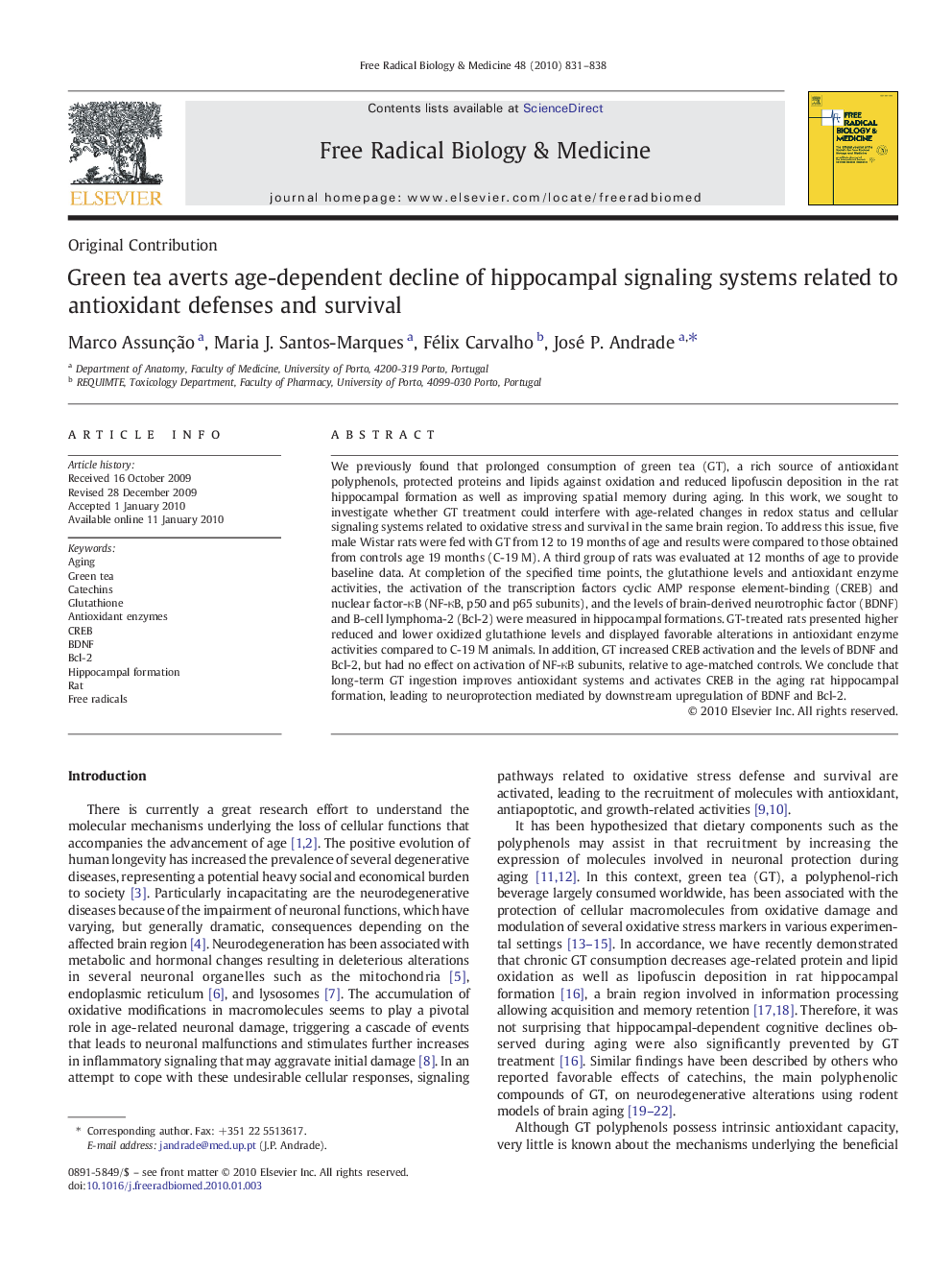| Article ID | Journal | Published Year | Pages | File Type |
|---|---|---|---|---|
| 1909842 | Free Radical Biology and Medicine | 2010 | 8 Pages |
We previously found that prolonged consumption of green tea (GT), a rich source of antioxidant polyphenols, protected proteins and lipids against oxidation and reduced lipofuscin deposition in the rat hippocampal formation as well as improving spatial memory during aging. In this work, we sought to investigate whether GT treatment could interfere with age-related changes in redox status and cellular signaling systems related to oxidative stress and survival in the same brain region. To address this issue, five male Wistar rats were fed with GT from 12 to 19 months of age and results were compared to those obtained from controls age 19 months (C-19 M). A third group of rats was evaluated at 12 months of age to provide baseline data. At completion of the specified time points, the glutathione levels and antioxidant enzyme activities, the activation of the transcription factors cyclic AMP response element-binding (CREB) and nuclear factor-κB (NF-κB, p50 and p65 subunits), and the levels of brain-derived neurotrophic factor (BDNF) and B-cell lymphoma-2 (Bcl-2) were measured in hippocampal formations. GT-treated rats presented higher reduced and lower oxidized glutathione levels and displayed favorable alterations in antioxidant enzyme activities compared to C-19 M animals. In addition, GT increased CREB activation and the levels of BDNF and Bcl-2, but had no effect on activation of NF-κB subunits, relative to age-matched controls. We conclude that long-term GT ingestion improves antioxidant systems and activates CREB in the aging rat hippocampal formation, leading to neuroprotection mediated by downstream upregulation of BDNF and Bcl-2.
